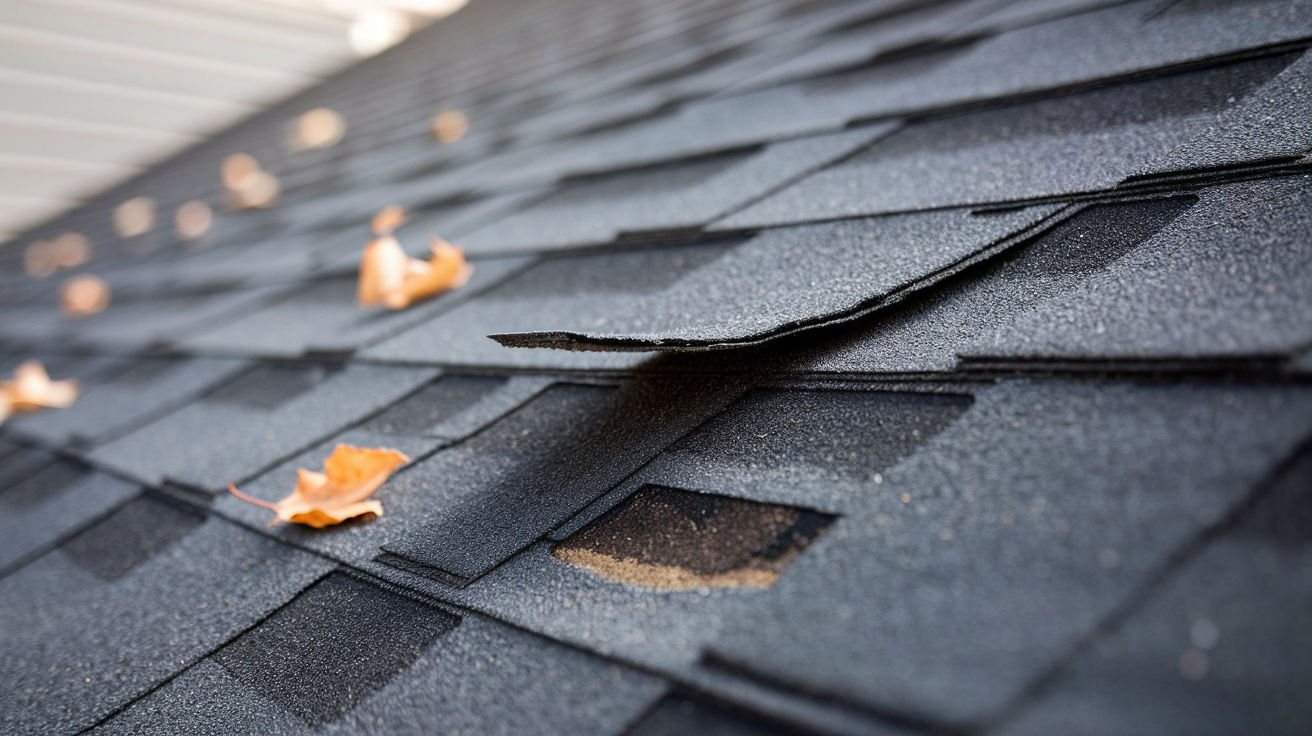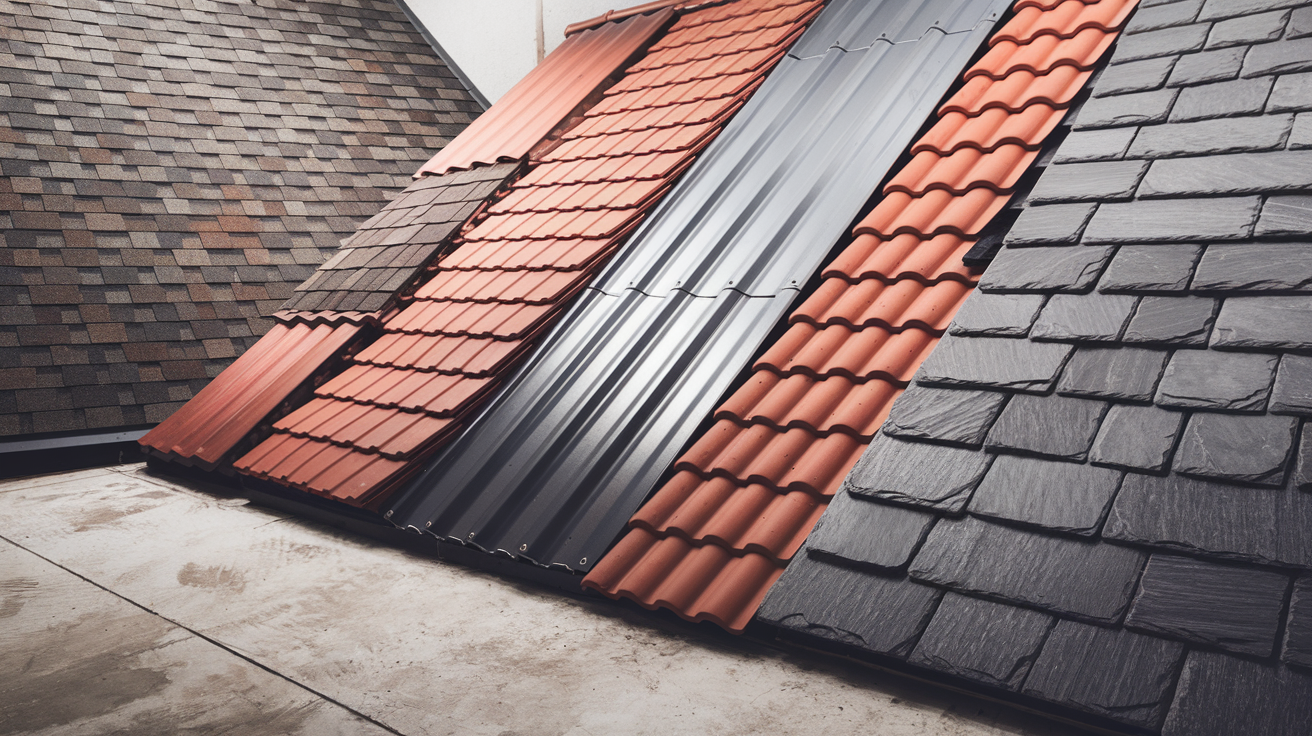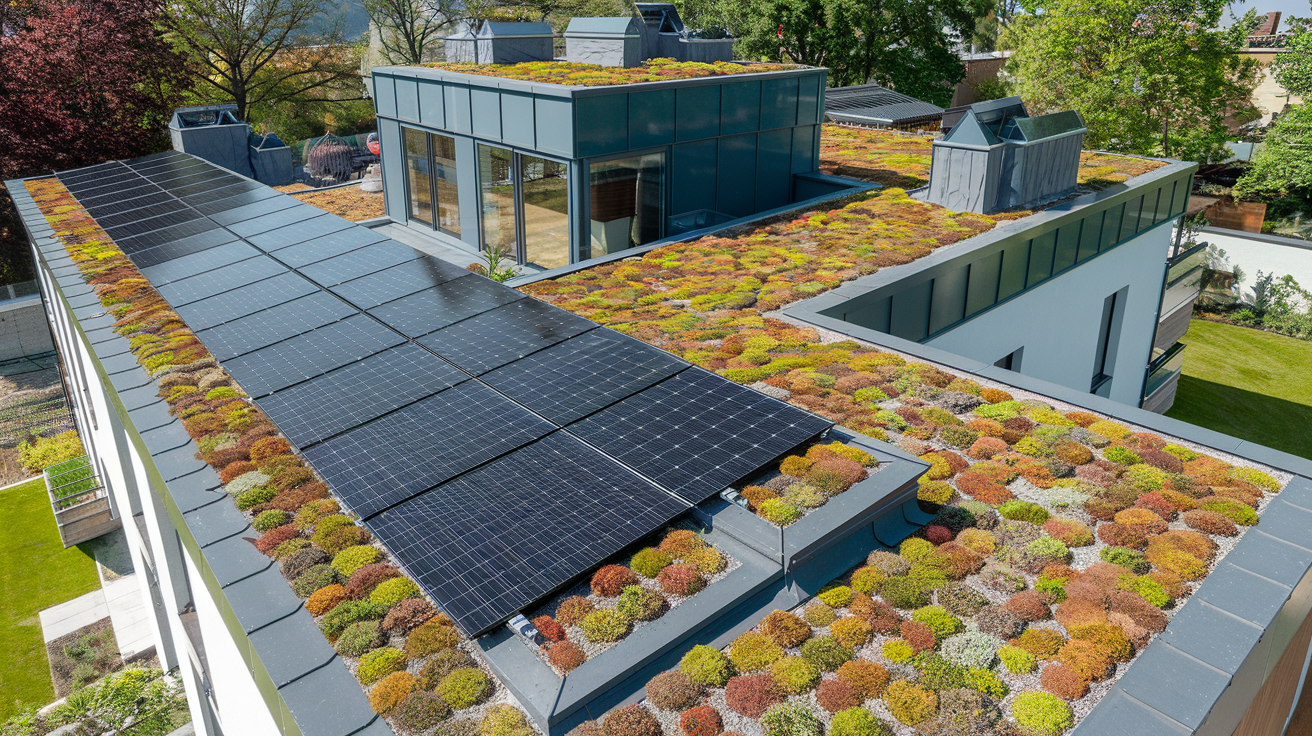UV Damage to Roofs: Expert Guide to Protection & Material Selection
Every day, your roof silently battles an invisible enemy - ultraviolet (UV) radiation. This relentless exposure can cut your roof's lifespan by up to 50% if left unchecked, leading to costly repairs and premature replacement. For homeowners, understanding UV damage to roofs isn't just about maintenance - it's about protecting one of their largest investments.
Recent studies show that UV radiation accounts for approximately 40% of roof deterioration in residential properties. The effects aren't always visible until significant damage has occurred, making prevention crucial. From cracking shingles to fading materials, UV damage manifests in various ways that can compromise your roof's integrity and your home's protection.
In this comprehensive guide, you'll discover how different roofing materials stand up to UV exposure, practical steps to protect your roof, and smart strategies for choosing UV-resistant materials. We'll explore cost-effective solutions that can extend your roof's lifespan and help you make informed decisions about repairs or replacement.
- Understanding UV Damage to Roofs
- Types of Roofing Materials and Their UV Resistance
- Choosing UV-Resistant Roofing Materials
- Preventative Measures and Maintenance
- Conclusion and Final Recommendations
Understanding UV Damage to Roofs
Understanding how ultraviolet (UV) rays affect roofs is crucial for homeowners. Protecting your roof from UV damage helps preserve its lifespan and your home's value. UV radiation from the sun is a primary cause of roof deterioration, leading to significant damage over time. This damage isn't merely cosmetic; it can cause leaks and structural problems that compromise the roof's integrity. This section explores how UV rays affect various roofing materials, the visible signs of UV damage, and the importance of UV-resistant materials. Consider scheduling a Get Your Roof Assessment to evaluate your roof's condition and identify potential UV damage.

How UV Rays Affect Roofing Materials
UV rays penetrate roofing materials, causing chemical changes that lead to deterioration. The UV wavelengths alter the materials' chemical composition, weakening them and making them susceptible to cracking, curling, and other damage.
Asphalt Shingles
Asphalt shingles, a common roofing material, are particularly vulnerable to UV damage. Prolonged exposure makes them brittle, leading to cracks and granule loss. Granules act as a protective layer, reflecting UV rays and reducing the radiation absorbed by the asphalt. Losing these granules significantly shortens the shingle's lifespan.
Wood Shakes and Shingles
Wood shakes and shingles also suffer from UV exposure. The rays can bleach the wood, weakening it and making it susceptible to weather damage. This bleaching occurs because UV rays break down lignin, which gives wood its color and strength.
Metal Roofing
Metal roofing, while generally more durable, can experience fading and oxidation over time, especially without UV-resistant coatings. For example, untreated steel can rust when exposed to UV radiation and moisture, weakening the metal and compromising its structure.
Visible Signs of UV Damage
Early detection of UV damage can prevent costly repairs and extend your roof's life. Regular roof inspections, ideally twice a year and after major storms, are recommended. Learn more about roof maintenance to understand the benefits of regular inspections.
Fading
Fading, where UV rays bleach the color from roofing materials, is a common sign of UV damage. While slight fading doesn't necessarily require immediate replacement, it indicates sun exposure and warrants closer inspection. Uneven fading might suggest a localized issue.
Cracking and Curling
Cracking and curling shingles, particularly in asphalt roofs, occur when UV radiation breaks down the molecular structure. A few curled shingles might be an early sign and should be monitored. Widespread curling or cracking necessitates repairs or replacement.
Granule Loss
Granule loss, often visible as accumulated granules in gutters or downspouts, is another indicator of UV damage. This signifies the shingles are losing their protective layer.
Blistering
Blistering can also indicate UV damage, as trapped moisture expands beneath the shingle surface.
The Importance of UV-Resistant Materials
The impact of UV rays on roofing materials is significant. Industry data suggests UV radiation can reduce the lifespan of roofing materials by a substantial amount without adequate protection. UV radiation weakens materials, making them vulnerable to wind and rain, which can lead to premature roof failure. Choosing materials with built-in UV resistance and performing regular maintenance are crucial for mitigating damage and extending roof lifespan. Metal roofs, with lifespans of 40-70 years (and sometimes over 100 years, depending on the alloy), generally possess excellent UV resistance. This is due to metal's inherent reflective properties.

Types of Roofing Materials and Their UV Resistance
Choosing the right roofing material is crucial for a long-lasting roof. UV rays from the sun can damage your roof over time, leading to costly repairs and a shorter lifespan. This section explores how different roofing materials stand up to UV damage, helping you make the best choice for your home. Consider scheduling a Get Your Roof Assessment to understand your current roof's condition.
Asphalt Shingles
Asphalt shingles are a popular choice because they're affordable and easy to install. However, they're also very vulnerable to UV damage. Sunlight weakens the asphalt, making it brittle and causing it to crack and lose its protective granules.
How UV Rays Affect Asphalt Shingles
UV rays break down the asphalt's molecular structure, causing it to decompose. This leads to:
- Fading: Asphalt shingles can lose their color, looking old and worn.
- Cracking: The asphalt becomes brittle and prone to cracks, reducing its ability to protect your home.
- Granule Loss: The protective granules can come loose, further weakening the shingles.
Regular roof inspections are important to catch these signs early. Asphalt shingles generally last 15 to 30 years. To learn more about roof maintenance and extend the life of your asphalt shingle roof, explore our comprehensive guide.
Metal Roofing
Metal roofing is a great choice for UV resistance. It's very durable and lasts a long time, typically 40 to 70 years, and sometimes even over 100 years depending on the type of metal. Metal roofs reflect sunlight, which also helps keep your home cooler. While metal roofing costs more upfront, it can save you money in the long run because it needs fewer repairs.
Clay Tiles
Clay tiles are beautiful and resist UV rays very well. They are dense and strong, so they can handle a lot of sun exposure. Clay tiles are a long-lasting option, though they can be more expensive and heavier than other choices. Proper installation is key to preventing cracks and ensuring they resist UV damage as expected. Even with their high resistance, intense sun exposure can eventually lead to cracking or chipping.
Wood Shingles and Shakes
Wood shingles and shakes give homes a natural look, but they're not as good at resisting UV rays as other materials. The sun can fade, crack, and warp wood over time. UV radiation weakens the wood's structure, leading to faster deterioration. You'll need to do regular maintenance and apply protective coatings to help them last longer.
Synthetic Roofing Options
Synthetic roofing materials, like composite shingles and rubber roofing, are designed to look like traditional materials but offer better protection against UV rays. They are often lightweight, easy to install, and come with long warranties. While designed for durability, all roofing benefits from regular inspections and maintenance.
In conclusion, choosing a UV-resistant roofing material is a smart investment. It protects your home, saves you money on repairs, and keeps your roof looking good for years to come. A Get Your Roof Assessment can provide personalized recommendations based on your specific needs and climate.
Choosing UV-Resistant Roofing Materials
When selecting roofing materials, it's crucial to consider their resistance to ultraviolet (UV) radiation. Sunlight, particularly UV rays, can significantly damage roofing materials, leading to costly repairs and a shorter lifespan. This damage can include fading, cracking, and deterioration. Choosing UV-resistant materials enhances a roof's durability and preserves its appearance. UV-resistant materials are designed to withstand the sun's harmful UV rays, extending their lifespan and reducing the need for frequent repairs. This resistance comes from special coatings or inherent material properties. Consider getting a roof assessment to determine the best UV-resistant roofing material for your home.
Factors to Consider Based on Regional Climate
Regional climate plays a key role in selecting suitable UV-resistant roofing materials. Sunlight intensity and duration, temperature changes, and rainfall all affect a roof's performance and lifespan. In sunny areas like the Southwest United States, materials like metal or clay tiles are recommended for their high UV resistance. Metal roofs reflect sunlight and last 40-70 years. Areas with less sunlight may use asphalt shingles, a less expensive option offering some UV protection. However, this protection is typically less than metal or tile. Learn more about roof maintenance and how climate impacts your choices.
Asphalt Shingles in Sunny Climates
While usable in sunny areas, asphalt shingles may have a shorter lifespan than more UV-resistant options like metal. UV rays can make asphalt brittle and cracked.
Cost Implications and Longevity Comparisons
Upfront costs are important, but consider longevity and maintenance too. Metal roofs cost more initially but are cost-effective over time due to their long lifespan and minimal maintenance. Asphalt shingles last 15-30 years and may need more frequent replacement, increasing long-term costs.
Budgeting for a New Roof
While asphalt shingles are usually cheaper upfront, calculating long-term costs, including replacements, helps determine the most cost-effective choice. Consider life-cycle costs, including installation, maintenance, and repairs. A metal roof's higher initial cost may be offset by its longer lifespan and lower maintenance compared to multiple asphalt shingle replacements.
Environmental and Energy Efficiency Considerations
Environmental impact and energy efficiency are vital when choosing roofing materials. UV-resistant roofs can save energy by reflecting sunlight and absorbing less heat, reducing cooling costs. UV-resistant materials often have reflective properties that minimize heat absorption, keeping the building cooler. This reduces heat transfer and the strain on cooling systems. Metal roofs are durable and reflect sunlight well, improving energy efficiency. White or cool roofs can reduce the urban heat island effect, benefiting the environment. This effect increases urban temperatures due to heat absorption by dark surfaces like traditional roofs.

Other Eco-Friendly Roofing Practices
Beyond materials, proper roof ventilation and insulation improve energy efficiency. Choosing recycled or low embodied carbon materials also minimizes environmental impact.
Preventative Measures and Maintenance
UV rays can damage roofing materials, leading to issues like cracks and granule loss. Taking preventative measures and performing regular maintenance can help your roof last longer. These steps protect both how your roof looks and how well it works.
Regular Roof Inspections and Maintenance
Regular roof inspections are key to finding early signs of UV damage, such as small cracks or missing granules. Catching these issues early can save you money on repairs in the long run.
What to Look For
During an inspection, check for fading, brittleness, and cracking. Asphalt shingles are especially vulnerable to these problems. UV rays can weaken the asphalt's protective coating, making it more likely to break down.
Inspection Frequency
Inspect your roof twice a year, in the spring and fall. Learn more about roof maintenance. Also, clean your gutters and remove debris to prevent water damage, which can make UV damage worse.
Professional Inspections
If you're not comfortable inspecting your roof yourself, hire a qualified roofing professional. Get Your Roof Assessment.
Protective Coatings and Treatments
Protective coatings and treatments create a barrier against UV rays. This helps reflect sunlight and reduce heat absorption, slowing down damage.
How Coatings Work
Coatings reflect UV rays, preventing them from penetrating the roofing material. Reflective roof coatings, for example, can lower surface temperatures and reduce UV damage.
Coating Maintenance
While coatings are effective, they don't last forever. Reapply them regularly as the manufacturer recommends. This will ensure continued protection, even for the underlying asphalt in shingles, which can become brittle from UV exposure.
Landscaping and Shade Solutions
Strategically placed trees, pergolas, or awnings can create shade for your roof. This reduces direct sunlight and protects your roof from UV damage.
Benefits of Shade
Shade helps cool your home and reduces stress on roofing materials. This lowers the risk of UV damage.
Planning for Shade
When planting trees, think about their placement and how big they will grow. Deciduous trees, for instance, provide shade in the summer but let sunlight through in the winter. Landscaping can also make your property look nicer.
Conclusion and Final Recommendations
In conclusion, sunlight, especially its UV rays, significantly impacts roofing materials. This exposure can lead to expensive repairs and shorten your roof's lifespan. Various materials, from asphalt shingles to wood shakes, are vulnerable to UV damage. This damage often appears as cracking, brittleness, and fading. UV radiation breaks down the materials' molecular structure, weakening them over time. This weakening can cause leaks and other problems if not addressed. Choosing UV-resistant materials and proper maintenance are crucial for a long-lasting roof. By taking proactive steps, you can keep your roof in top condition for years to come. For a comprehensive evaluation of your roof's current condition, consider our Get Your Roof Assessment.
Best Practices for a UV-Resistant Roof
Choosing the right materials is the first step in building a UV-resistant roof. Consider these options and their benefits.
Metal Roofing
Metal roofing is known for its durability and energy efficiency. It typically lasts 40-70 years and effectively resists UV damage. While potentially more expensive initially, its long lifespan makes it a worthwhile investment. The metal's inherent properties and special coatings reflect UV rays, providing superior protection.
Asphalt Shingles with UV Protection
High-quality asphalt shingles with UV-protective granules offer enhanced resistance to sun damage. These granules act as a shield, absorbing and deflecting UV rays before they reach the underlying asphalt. When choosing shingles, look for options specifically designed to withstand prolonged sun exposure. Some manufacturers add UV-resistant coatings for extra protection. Ask about UV protection when comparing shingle options.
Steps to Take for Long-Term Roof Protection
Regular maintenance is key for long-term roof protection.
Routine Inspections
Routine inspections help identify early signs of UV damage, like minor cracking or granule loss on asphalt shingles. Addressing these issues early prevents more extensive and costly repairs. Schedule professional inspections annually and after severe weather. While you can inspect your roof yourself, professionals can spot subtle damage you might miss. To learn more about roof maintenance, visit our comprehensive guide.
Preventive Measures: Ventilation and Insulation
Proper ventilation and insulation are vital for protecting your roof from UV damage.
Ventilation
Adequate ventilation regulates the temperature inside your roofing system, reducing heat-related degradation often worsened by UV exposure. Good ventilation prevents excessive attic heat buildup, which can damage the roof's underside. Improve ventilation by adding vents like ridge vents or soffit vents.
Insulation
Insulation prevents heat buildup, further protecting your roof. It maintains a stable temperature, reducing expansion and contraction that weakens the roof over time. Proper insulation acts as a barrier, minimizing temperature fluctuations caused by sunlight.
By following these practices and taking proactive steps, you can effectively combat UV damage and maintain a durable, long-lasting roof. Investing in UV-resistant materials and regular maintenance extends your roof's life and provides peace of mind, knowing your home is protected from the sun.
Incorporating Reflective Coatings
Reflective coatings significantly boost a roof's UV resistance. They reflect sunlight, reducing heat absorption and minimizing thermal degradation. This can also lower energy bills. Reflective roofs can be up to 50 degrees Fahrenheit cooler than traditional roofs. These coatings can be applied to various materials, including asphalt, metal, and some tile types.
Disclaimer: This blog post is intended for informational purposes only and should not be considered professional roofing advice. Always consult with qualified roofing contractors and insurance professionals for specific guidance regarding your individual circumstances.
